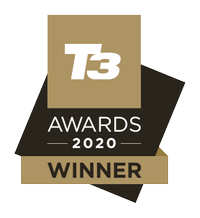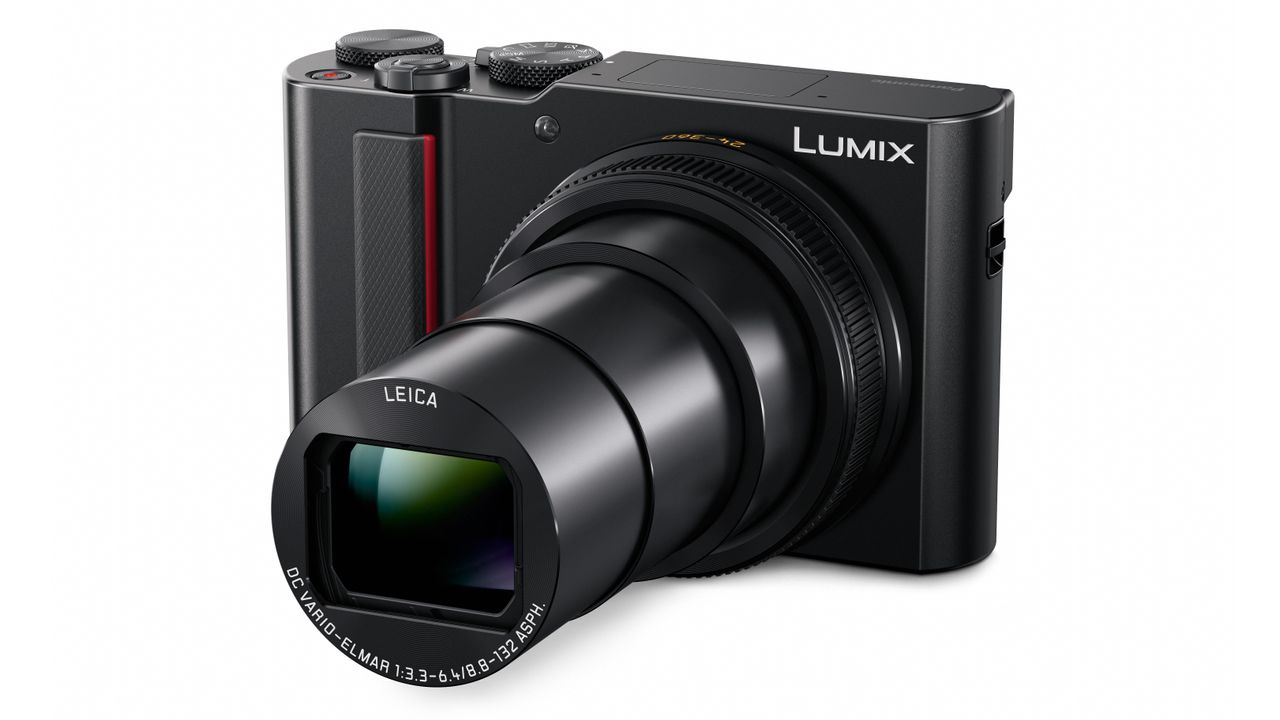Although it’s safe to say that the compact camera market has been hugely impacted by the rise of the smartphone, those who need something extra can still benefit from getting the best compact camera.
There are a number of key reasons why opting for a standalone camera can be a better idea than your smartphone. That could be a larger sensor, a longer or more flexible zoom, reliable battery life, rugged capability or some kind of combination of all three that leads you towards investing in one of the best compact cameras.
Despite there being far fewer new releases into the compact camera market, there’s still a healthy number of compact cameras available to buy. Although it’s true to say that most manufacturers have been concentrating on the best mirrorless cameras, there’s still plenty available for those who want something a bit more pocket-friendly.
Choosing one camera as the best compact camera isn’t particularly easy. Lots of the models on this list serve different purposes, so it really depends on what you’re looking for. That said, if you’re in need of a fantastic all-rounder, then the ultimate compact camera has to be the Sony RX100 VII. This fantastic model really delivers the goods, but you’ll pay a pretty penny for it too. If your budget is a little more restricted, it’s worth investigating older models in the RX100 line-up.
How to buy the best compact camera
Compact cameras come in handy for a variety of reasons, and for recording a variety of different subjects and settings. As such, our list takes into account how well the device handles various subjects, as well as how pleasant the camera is to use, and whether it represents good value for money.
As such, there are some factors that anybody buying a compact camera might want to consider when browsing for the best compact camera. Think about the following:
Size - This is often the most important or deciding factor for some. If you want something that will slip into a pocket for always having with you, then look for something small, neat and truly compact. Several of the models in our list won’t provide that for you - but have other benefits as a trade-off for being bigger.
Zoom - Here’s another factor that often isn’t catered for by the average smartphone. Even the best smartphones for photography tend to offer a relatively limited optical zoom. As such, compact cameras with lengthy zooms provide maximum flexibility and might be particularly favoured for travel and day trip photography.
Manual controls - Enthusiasts might also feel that their smartphone doesn’t provide them with the same level of control or tactility that a “real” camera does. As such, those which allow you to take complete control over shooting settings, particularly with real dials and buttons can be very appealing.
Ruggedness - Most smartphones are water resistant these days, but some compact cameras go that step further and allow you to go diving with them, or take them into very cold conditions, or withstand quite a hefty knock around. The best tough cameras are ideal for adventurers.
As you might imagine, there are only a limited number of cameras that will tick every box for you. Probably the closest (non-rugged) option is the Sony RX100 VII. It’s pocket friendly, has a decent zoom range, gives you full manual control and raw format shooting and also includes 4K video and blogger-friendly features. You do pay a price for that perfection though, so if you can compromise on at least one of the features there might be something that makes more sense for you.
If zoom is your most crucial specification, cameras such as the Panasonic Lumix TZ200 or the Canon PowerShot SX740 make a lot of sense. With the latter, you’ll have to compromise with a smaller sensor, but if you’re mainly shooting in good light that shouldn’t be such an issue. If you’re happy to lose out on pocketability, then a premium bridge camera such as the Panasonic Lumix FZ2000, the Sony Cybershot RX10 IV or the Panasonic FZ1000 II make a lot of sense too, giving you a good all-round experience.
For those who most crave a large sensor and full manual control, but can live without a super long zoom, models like the Panasonic Lumix LX100 II, which has one of the biggest sensors on our list, but doesn’t have much of a zoom. Others like the Canon PowerShot G7X Mark III have a one-inch sensor, lots of manual controls along with small (but still usable) zooms.
If your camera’s ruggedness is the most important factor, the best option right now is the Olympus Tough TG-6, which has a small sensor, but can be taken deep underwater and be bashed around with relative impunity.
Vlogging has essentially become its own category recently. Right now one of the best cameras for vloggers is the Sony ZV-1, which shares a lot of the same specifications as the Sony RX100 VII but is orientated towards video users instead of stills.
Finally, if the best possible image quality is at the very top of your list then it’s worth thinking about something which has a very large sensor, but a fixed length. What you lose in flexibility, you make up for in excellent imagery. The best models which match this description are the Fujifilm X100V - which is superb for street photography. It has an APS-C sensor, but you can even go one step further than that and pick up a Leica Q2, which boasts a full-frame sensor.
The best compact cameras for you


For those looking for the best possible image quality in a pocket-friendly body, Sony is the best candidate here. The latest model is the RX100 VII, which continues to build on Sony’s reputation for high-quality premium compact camera. The big new addition here is a microphone socket, which finally makes the RX100 series appealing to vloggers.
Otherwise, you’ve got a one-inch sensor which is offered by a 24-200mm (equivalent) lens, which should suit most everyday scenarios. Unlike earlier RX100 models, the lens doesn’t offer a super-wide aperture - which could be an issue if you’re often shooting in low light.
A retractable viewfinder and tilting screen round out the appealing specs list - but it all comes at a very high price. If your budget is a little more modest, take a look back through the older RX100 models - with them all on sale, you’re likely to find one which matches your budget.


With a beautifully retro design mixed with a host of advanced features, the X100V is the fifth generation of an extremely well-regarded premium compact camera. It was the original X100 which launched Fujifilm back into the realm of serious photography, after years languishing as the creators of cheap and cheerful point and shoots.
The X100V, like its predecessors, sports a DSLR-sized (APS-C) sensor, which is paired with a 23mm f/2 fixed length lens. That gives you an equivalent focal length of 35mm - the perfect length for street photography. It might seem restrictive to only have one focal length, but it many ways it’ll force you to get more creative with your photography - and that’s no bad thing.
What’s new here for the latest generation is a sharper lens, an improved viewfinder, a higher resolution and the addition of a tilting screen. The older X100F is still a good buy, but if you want the best all-rounder, it’s worth considering the extra outlay for the X100V.


Rather than updating its line of RX100 cameras, in 2020 Sony took the decision to create a dedicated vlogging camera instead. That decision made a lot of sense, considering the RX100 VII was already far in advance of others on the market.
If you’re somebody who favours capturing video over stills, then it makes a lot of sense to plump for this camera - especially as it’s cheaper than its RX100 cousins. If you are a vlogger who wants to be able to grab a couple of stills as and when necessary, it can do that pretty well, too.
Good examples of the video-friendly specs it houses include 4K video recording, a vari-angle 3-inch touch-sensitive screen and the ability to use an external microphone. You also get useful modes such as “product showcase” too.


Panasonic’s TZ100 was an impressive little compact travel camera, but it upped the ante with the TZ200, boosting the zoom lens up to 15x. Panasonic says that both the TZ cameras will remain in its line-up, giving you two options designed to suit your budget and your needs.
Design-wise, the two compact cameras are very similar, so we’re still lamenting the lack of a tilting screen for the TZ series, but otherwise, it’s a stylish pocket-friendly camera that is absolutely ideal for your travel needs. The one-inch sensor puts it in a realm above other travel compact camera, while the long zoom sees it outperform the Sony RX100 V.
Other improvements to the model include a better electronic viewfinder and a new sensor which produces better colour. One area where it falls down a little is in low-light, so if you’re somebody who likes to do a lot of dim snapping, it may not be the one for you.


The second version of this popular premium compact model represents a complete overhaul when compared to its predecessor.
You get an inbuilt retracting viewfinder (much like we’re used to seeing from Sony), a one-inch 20-megapixel sensor and a 5x optical zoom which although not particularly long, does offer wide apertures for shooting in low light.
Other useful features include 4K video recording, USB-C battery charging (great for charging on the go) and burst shooting up to 30fps.
In short, this is a great all-rounder, which competes well with the Sony RX100 VII range at a more affordable price. You don’t get quite such advanced tech as the Sony offers, but on the plus side, it handles a little bit better.
If you’re a vlogger, take a look at the Canon G7X Mark III instead, which you can pair with an external microphone for improved sound.


The G7X Mark III is a great little compact camera which fits neatly in your pocket and appeals to both stills and video shooters.
Its predecessor was popular with vloggers, but the newest model gets extra fans for including a mic socket. The 4K video recording is uncropped too, which is another tick in the box.
There’s a one-inch sensor, which is joined by a 4x optical zoom lens - it’s not the lengthiest in the world, but it should suit most ordinary situations.
If you’re primarily a stills shooter, you’d probably be better off going for the G5X Mark II, but if your budget can’t quite stretch – or you shoot a lot of video – the G7X Mark III is a canny investment.


If you need something to capture specific underwater activities - such as snorkelling, then a camera like this is just the ticket. It also comes in useful as a general family camera for day trips and holidays, its ruggedness making it useful for beach-side and pool-side escapades.
The Tough TG-6 is waterproof down to 15 metres - by contrast, most water resistant smartphones only manage about 1 metre, and usually are only guaranteed for a short period of time (say 30 minutes). You also get crush proofing and freeze proofing too, so no matter the kind of adventures you like, you should be covered by it.
Other useful features include an f/2.0 lens, macro modes, 4K video recording and some - albeit limited - manual functionality. Raw format shooting is also available so you can make tweaks after the fact if you need to.


The Sony RX10 IV is the latest in Sony’s line of super premium bridge cameras. Using the term “bridge camera” for a camera of this quality is a bit of a misnomer, since it offers so much more than a standard bridge offering.
It keeps the same 25x optical zoom lens of its predecessor, which gives you 24-600mm in 35mm terms, with an f/2.4-4 aperture range giving you lots of scope when working in low light. Improvements have been made to the 20.1-megapixel one-inch sensor, which now uses a stacked designed for even better image quality.
Other great features include the option to shoot at a whopping 24fps – perfect for wildlife photographers – a fantastic EVF, a tilting touch-sensitive screen and 4K video recording. The main drawback of the RX10 IV is its very high asking price – but with all those specs in a travel-friendly package, you do get a lot for your cash.


We had to wait quite a long time for Panasonic to produce an upgrade to its popular LX100 from four years ago. The resulting “Mark II” is more an incremental upgrade than all-out revolution, but arguably that’s just because the first model was so good.
Sporting a Four Thirds sensor in a body that you can almost fit into your trouser pocket, the LX100 II is ideal for travel and street photographers looking to travel light without facing too much of an image quality compromise.
Improvements come in the shape of adding touch-sensitivity to the screen, additional 4K Photo modes, more creative modes plus the ability to charge the camera via USB. The fact that the screen doesn’t tilt is a big let down for a camera so squarely aimed at street photographers, while some may feel restricted by the relatively short focal length.
Overall though, the LX100 II is a top-notch premium compact camera that is capable of producing fantastic images in a range of different conditions.


If you are keen on the X100V, but don’t have quite the budget to buy it, then having a look at its predecessor is a smart choice - the main you thing you lose out on is the tilting screen.
The Fuji X100F is as beautiful as it is capable. If the retro look floats your boat, then the X100F is a thing to behold, just like pretty much every camera in Fuji’s impressive stable.
The X100F is a compact camera but it’s got the same size sensor as a DSLR (APS-C). It’s paired with a lovely 35mm f/2.0 fixed-length lens - and while that sounds restrictive, it’s superb for capturing street life and travel images which really make you think about what you’re photographing before indiscriminately hitting the shutter release.
There’s also a wonderful hybrid viewfinder which combines optical and digital technology for the best of both worlds. It’s a shame the screen doesn’t tilt, or the camera would be nigh-on perfect.


Time was that bridge cameras had a bit of a dodgy reputation. They offered a high zoom but the image quality was a bit ropey. That’s not the case any more with the current crop of well-performing and very appealing premium bridge cameras like the FZ2000.
This is a genuine contender for a DSLR replacement, giving you a 20x optical zoom in a body which means you don’t need to carry around extra lenses. It’s also got a cracking viewfinder, a great free-angle screen and a range of 4K Video and Photo options.
If you’re looking for an all-rounder for travelling, and have got more room than just a pocket, the FZ2000 is an excellent choice.


Although now starting to show its age a little bit, Canon’s G1X Mark III is still a good choice for anybody who wants high-image quality in a travel-friendly device.
Of course, you do have some compromise here, most notably the short zoom range - there’s just 3x optical zoom available. That’s still excellent for a compact camera with such a large sensor - most others in this category make do with a fixed length lens. The biggest drawback here is the high asking price, but for something which puts DSLR image quality in your pocket, you may just think the money is worth it.


Every now and then a camera comes along which feels more like a proof of concept than something that many people will buy. The P1000 is one such model – a pricey “bridge” camera that goes so extreme in this genre that you are likely to draw some interesting looks from passers-by in the park.
Packing a 125x zoom – so that’s 24-3000mm, you can quite literally shoot the moon with the P1000. Once you’ve done that on the first day out of the box, you’re left with a very bulky camera that can shoot super distant subjects, but doesn’t excel at it.
There are other things to like about the P1000 – it’s got a great viewfinder, offers manual control and raw format shooting, and the screen fully articulates. All of that comes at the price of having to carry a monster camera around – but if zooming’s your thing, it’s certainly worth having a look.


The SX740 is a great point-and-shoot for those looking for a travel-friendly compact camera.
Although it has manual control options, it’s not really something we’d overtly recommend for advanced enthusiasts, especially as it doesn’t have raw format shooting. Having a 40x optical zoom is great for getting closer to the action, but such a long lens necessitates a small sensor – if you’re mainly going to be using this camera for bright daylight shots of your holidays, that shouldn’t be a problem, but for low-light and night work, it’s not the best performer in the world.
On the major plus side, at £350 it doesn’t represent a huge cash outlay, especially compared with some of the other models in our list.


The Leica Q2 is an upgrade to the 4-year-old Leica Q (opens in new tab). It features a supersized full-frame sensor (47.3 megapixels) and a fixed 28mm f/1.7 lens which combines together to produce beautiful results. Compared to its predecessor, the beautiful body, which features a great range of direct access controls and dials, it’s very similar.
However, under the hood, there have been some significant improvements. That sensor has almost doubled in resolution - the older model offering 24.2 megapixels, while there’s a newly-developed Maestro II image processor which promises faster speeds.
There’s a range of other advanced technologies in the spec sheet here, but at over £4250, it’s easy to assume that the most obvious customer of this compact camera is those with a penchant for the Leica red dot, no matter what it’s capable of producing.


If you want the ultimate in pocket-sized image quality, then you can’t go far wrong with the RX100 VI. This is now the last generation model, so it's more affordable than its initial high-asking price, meaning it still earns its place on the best compact camera list.
A large one-inch sensor is joined by a wonderful lens which offers a 35mm equivalent of 24-200mm - a classic walk around length. There’s also a host of other handy features, such as an inbuilt retractable viewfinder and a tilting touch-sensitive screen.
If you’re struggling to justify the high asking price, have a look at older versions of the RX100, such as the Mark V and the Mark IV which are still cracking models.
- Read T3's full Sony RX100 VI review


Canon’s range of PowerShot G series compact cameras are a great alternative to your DSLR when size and weight is of the utmost importance. There’s a great range to choose from, but the G7X Mark II sits nicely in the middle with a great balance between small size and a range of features.
It’s got a 4x optical zoom, a tilting touch-sensitive screen and a large one-inch sensor. You can shoot in raw format and take full manual control, but the lack of a viewfinder may be off-putting for some traditionalists. If you can find room for a camera a little bigger, the Canon G5X might be the more appealing choice.


If you don’t quite have the budget for the FZ2000 or one of the other best compact cameras, consider instead the FZ1000 II. Designed as a refresh to the original FZ1000, it’s a good option if you don’t need more than a 16x optical zoom lens and want to save a bit of cash.
It’s got a large one-inch 20.1-million pixel sensor, 4K Video and Photo modes, 12fps shooting at full resolution and an electronic viewfinder that accompanies a fully articulating, touch-sensitive screen.
The button layout has been refreshed a little, and now includes a “Zoom Compose Assist” function to help you keep track of distant subjects, but otherwise, it’s not a major overhaul from its predecessor. Bluetooth connectivity has also been added, which means you can maintain a constant connection between your smartphone and the camera.
If you want to save even more cash, keep a lookout for the older FZ1000 which is still a neat performer.
Liked this?
- Best entry-level camera
- Best camera backpack: protect your photography gear
- Best travel tripod: lightweight tripods ideal for travel











